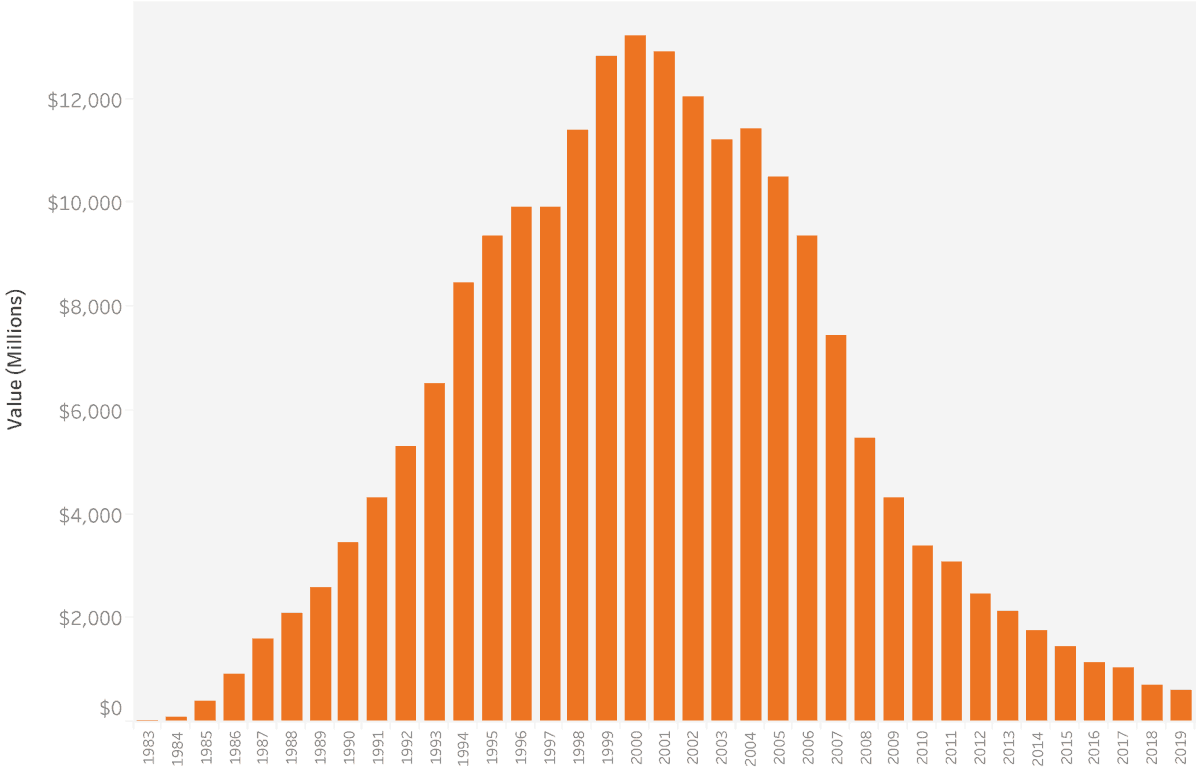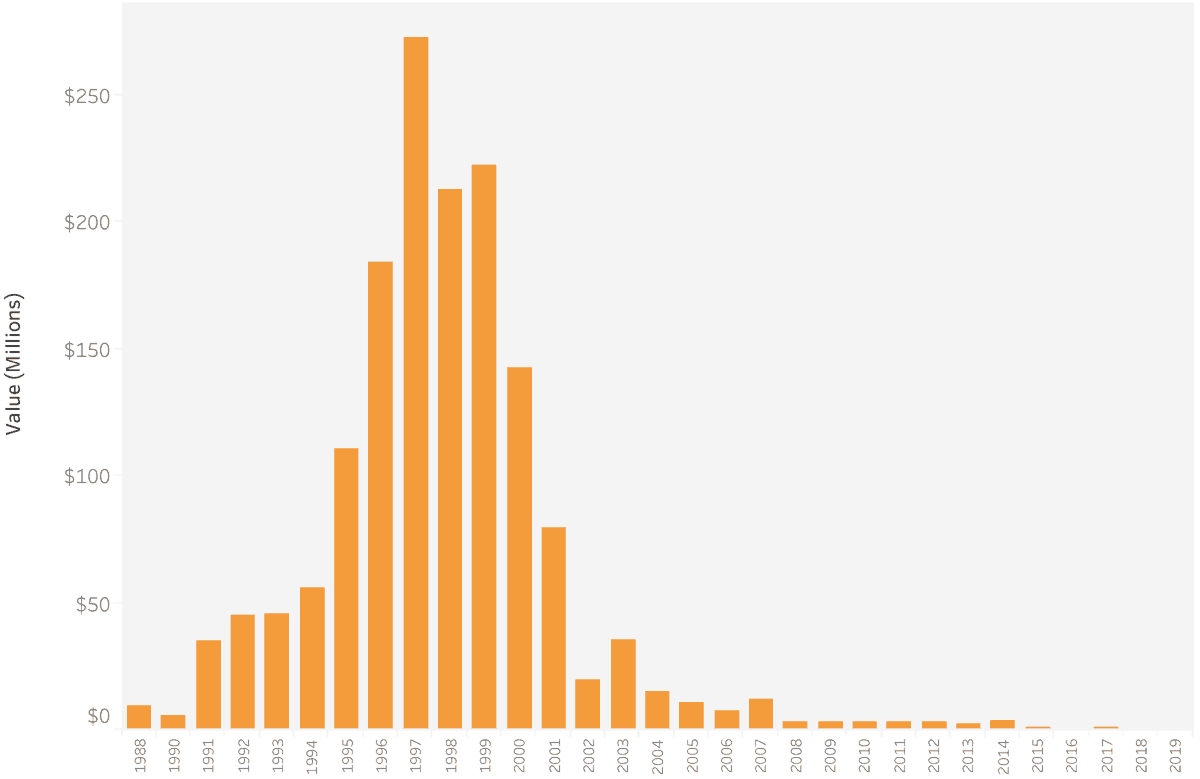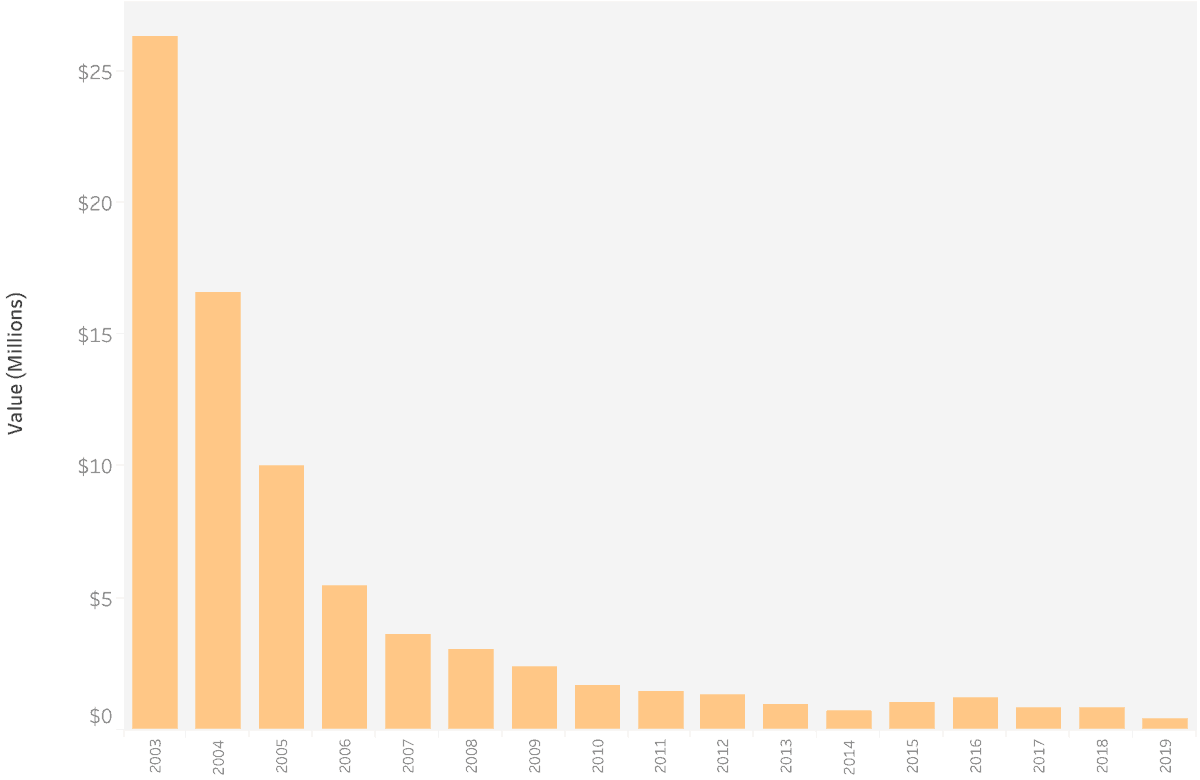CD sales drop to new low

Compact Disc (CD)
Updated: 10/04/2020 – The first commercial Compact Disc (CD) was released in 1982 and the CD was planned as the successor to the vinyl record. Developed by Philips and Sony, sales of CDs grew quickly and by 2004 cumulative worldwide sales of audio CDs, CD-ROMs and CD-Rs reached about 30 billion discs and 200 billion by 2007. However, from the beginning of the early 2000s CDs were increasingly being replaced by other forms of digital storage and distribution with the result that by 2010 the number of audio CDs being sold in the US had dropped to about 50% of their peak.
By 2019 sales of music on physical media in the US had fallen to 11% of the total with only 46.5 million CDs (5.5% of the total) sold in the year compared to their peak of 942.5 million copies. CD sales in the UK declined 26.5% during 2019 and were worth £141.7m representing just 13.3% of total revenue.

CD Singles
Launched in 1986, CD Singles had a relatively short-lived popularity in the mid-1990s but as digital distribution methods started to become available in the early 2000s sales rapidly dropped. At their peak, CD Singles sold 67 million copies annually in the US and now account for sales of less than $200,000 annually.

SACD
Super Audio CD or SACDs were developed to be the successor to the CD. They allowed additional playing time – 110 minutes compared to the 80 minutes of a normal CD – and the ability to record up to 6 channels of audio instead of the usual stereo pair of a CD. Audio quality was claimed to be improved but research published in 2007 in the Audio Engineering Society journal found no significant difference in audio quality between SACDs and CDs at ordinary volume levels. Controversy continues as whether SACDs sound better than standard CDs but commercially SACDs never caught on and from a high of 1.3 million copies sold in the US in 2003, sales have declined to $400,000 annually and mainly to a fiercely loyal audiophile audience.
Compact Disc Timeline
| 1982 | First commercial Compact Disc (CD) released – The Visitors by Abba on 7th August |
| 1986 | First commercial CD Single released – Angeline by John Martyn on 1st February |
| 1988 |
CD sales in the US overtook vinyl LPs |
| 1992 | CD sales in the US overtook pre-recorded music cassette tapes |
| 1997 | First portable MP3 player was launched in 1997 by Saehan Information Systems selling its MPMan players in Asia in spring 1998. |
| 1999 | Super Audio CD (SACD) format launched Napster file sharing service launched – 1st June |
| 2000 | US sales peaked at 943 million CDs |
| 2001 | Pre-recorded music cassette sales in US dropped to 4% of total Apple launches iPod on 23rd October |
| 2003 | Most major US record companies discontinued manufacturing pre-recorded music cassette tapes |
| 2008 | CD Singles start to be dropped by record companies and retailers due to lack of demand Spotify streaming music service launched launched 7th October |
| 2010 | US sales of CDs declined to 50% of their peak |
| 2012 | US sales of SACDs dip below 100,000 copies |
| 2014 | iPod discontinued by Apple after having sold 390 million units US revenues from digital music services equalled those from physical format sales |
| 2016 | 1.5 billion smartphones sold globally |
| 2017 | US Sales of CDs had declined to 88 million units – 12.7% of US music revenues One third of the world’s population own a smartphone |
| 2018 | Streaming music services account for 80% of the US recorded music market US Sales of CDs had declined to 52 million units – 7.1% of US music revenues |
| 2019 | Smartphone users are projected to number 2.7 billion users |
Future of physical CDs
The Rise and Rise of Streaming
Streaming continues to take an ever larger share of the recorded music market increasing 24% in 2019 to make up 56% of global music industry revenues.
In the US streaming accounted for 80% of the recorded music market in 2019 with physical sales and digital downloads continuing to decline.
Future growth in streaming is likely to come from increased sales of Smart Speakers, ‘connected’ cars with In Car Streaming and the near ubiquitous availability of smartphones.
Are Smart Speakers the future of Streaming?
US retailers are starting to stop stocking physical CDs
According to Billboard magazine, US retailer Best Buy has told music suppliers it will be ceasing the sales of CDs from its stores from the 1st July 2018. Sources estimate that despite being the most powerful music retailer in the US, the company’s CD business is ‘only generating about $40 million’ every year.
Best Buy will continue to sell vinyl for the next two years, which enables them to keep their commitments it made to vendors.
Another retailer, Target, has already reduced its music presence, having gone from selling around 800 music titles to now ‘less than 100 titles in most stores’
Future of the CD format
The future of the format seems assured with streaming services adopting it as the base level audiophile/HiFi standard adopted by Qobuz, TIDAL, Deezer, Primephonic, Idagio and the Neil Young Archives. These early adopters have now been joined by industry heavyweight Amazon with their Amazon HD service launched in September 2019 offering both CD Quality and HiRes streaming to their Standard Quality (320 kbps MP3) streaming subscriptions.
CD Quality streams are usually 44.1kHz/16bit FLAC and will need a steady internet connection of 1.5 to 2 Mbps. A 3½ minute song downloaded for offline listening will typically need 51 MB of storage.
Most smart speakers, gaming devices and smart TVs support the CD Quality file format and there are now even CD Quality Internet Radio Stations offering a range of programming options with audiophile/HiFi quality sound.